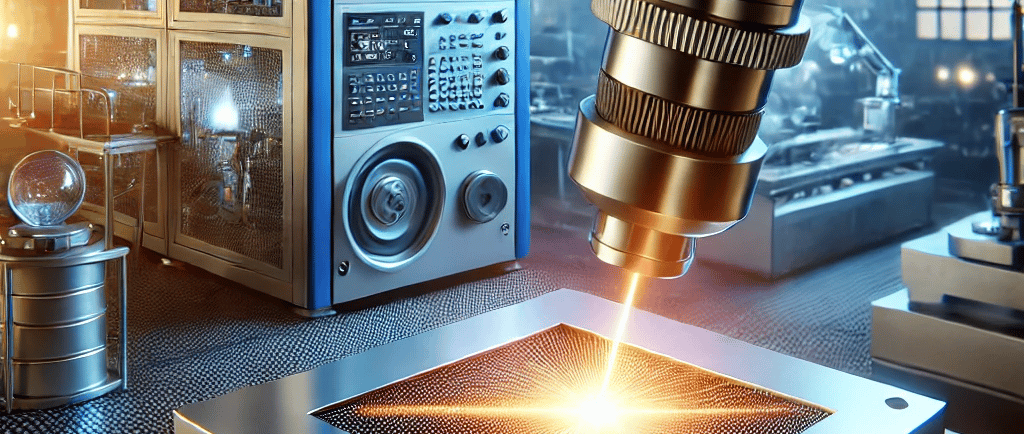Laser-Induced Breakdown Spectroscopy (LIBS): Revolutionizing Metal Analysis
Discover how Laser-Induced Breakdown Spectroscopy (LIBS) is transforming metal analysis with fast, accurate, and radiation-free material identification. Compare LIBS vs. XRF, explore industry applications, and learn how LIBS enhances scrap metal sorting, pricing accuracy, and manufacturing quality control.
METAL SCIENCE & INDUSTRIAL TECHNOLOGY


Introduction
In the fast-evolving world of metal analysis, precision and efficiency are paramount. Whether in recycling, manufacturing, mining, or quality control, accurate material identification directly impacts pricing, quality assurance, and operational efficiency.
As industries pursue better methods for elemental analysis, two standout technologies—Laser-Induced Breakdown Spectroscopy (LIBS) and X-ray Fluorescence (XRF)—have reshaped the landscape of metal identification and composition testing.
Key Questions Answered in This Article:
How do LIBS and XRF improve scrap metal quality, pricing accuracy, and manufacturing efficiency?
What are the differences between LIBS and XRF in metal analysis?
Which technology is better suited for different industrial applications?
What is LIBS and How Does It Work?
Understanding Laser-Induced Breakdown Spectroscopy (LIBS)
LIBS is a non-destructive analytical technique that enables rapid elemental material identification.
How LIBS Works:
A high-energy laser pulse is directed onto the material’s surface.
The laser ablates the material, generating a micro-plasma that emits light.
A spectrometer analyzes the emitted light to determine the elemental composition of the material within seconds.
Key Advantages of LIBS in Metal Analysis
Ultrafast Analysis – Provides real-time results in milliseconds.
High Sensitivity for Light Elements – Accurately detects lithium, beryllium, aluminum, and magnesium, which XRF struggles to identify.
Portability & On-Field Operation – Handheld LIBS devices allow on-site analysis in scrap yards, mining sites, and production lines.
Minimal Sample Preparation – No need for complex sample prep, unlike traditional methods.
No Radiation Compliance Issues – Unlike XRF, LIBS does not produce ionizing radiation, making it safer.
Industries Benefiting from LIBS:
Automotive & Aerospace Manufacturing – Ensuring alloy composition meets industry standards.
Scrap Metal Recycling – Enhancing sorting accuracy and profitability.
Mining & Metallurgy – Identifying valuable metals in raw ore extraction.
LIBS vs. XRF: A Detailed Comparison
Both LIBS and XRF play a critical role in scrap metal sorting, quality control, and alloy identification, but their mechanics and suitability differ.
How LIBS and XRF Compare:
1. Working Principle
LIBS: Uses laser excitation to create plasma and analyze emitted spectra.
XRF: Uses X-ray excitation to stimulate fluorescence, which is analyzed.
2. Elemental Sensitivity
LIBS: Excels in detecting light elements (Li, Be, Al, Mg, Si).
XRF: Best for heavy metals (Pb, Au, Cu, Ni).
3. Speed of Analysis
LIBS: Real-time results in milliseconds to seconds.
XRF: Slower, typically seconds to minutes.
4. Portability
LIBS: Highly portable, ideal for field applications.
XRF: Bulky, requiring radiation shielding and regulatory compliance.
5. Compliance & Safety
LIBS: No radiation risks, making it easy to operate.
XRF: Requires compliance with radiation safety regulations.
6. Cost Consideration
LIBS: Lower operational costs, no radiation-related expenses.
XRF: Higher initial and compliance costs.
When to Use LIBS vs. XRF
LIBS is ideal for light metals such as aluminum, titanium, magnesium, and lithium-based alloys.
XRF is preferred for heavy metals like lead, gold, and copper in mining and metallurgy applications.
Scrap metal recyclers and aerospace manufacturers are increasingly adopting LIBS for its speed and accuracy in detecting light metals.
Enhancing Scrap Metal Quality with LIBS and XRF
1. Better Scrap Metal Sorting and Recycling Efficiency
LIBS improves sorting accuracy, ensuring light alloys like aluminum aren’t misclassified.
The Institute of Scrap Recycling Industries (ISRI) found that improper sorting reduces recycled metal value by up to 20%.
LIBS helps increase purity levels and profitability in scrap yards.
2. Improving Price Accuracy Based on Composition
Metal prices depend on composition—a batch with 90% pure aluminum has a much higher market value than a mixed alloy.
LIBS prevents misclassification, ensuring recyclers maximize profits.
3. Industrial Quality Control for Metal Manufacturing
Aerospace & automotive industries rely on precise compositional analysis to meet regulatory standards.
LIBS ensures raw materials are correctly identified before production, reducing waste and avoiding defects.
Why LIBS is Transforming Metal Analysis Technologies
LIBS is revolutionizing metal analysis due to its speed, accuracy, and automation potential.
Why Industries Are Adopting LIBS:
Fast material verification – Crucial for time-sensitive quality control.
Superior light metal detection – Excels in lithium, magnesium, and aluminum alloys.
Integration with automation – Used in smart factories for real-time quality checks.
No radiation regulations – Avoids compliance issues associated with XRF.
Real-World Adoption of LIBS:
Tesla & EV battery manufacturers use LIBS to verify lithium purity.
Boeing & aerospace firms use LIBS for titanium alloy testing.
Scrap yards using LIBS report a 15-20% increase in sorting efficiency and higher profitability.
With the growing demand for lightweight metals, LIBS is becoming the dominant metal analysis tool.
The Future of LIBS in Metal Analysis
1. AI-Enhanced LIBS for Automated Metal Classification
AI-driven LIBS systems will identify complex alloys faster than ever before.
2. Industrial IoT (IIoT) + LIBS Integration
LIBS is being integrated into Industry 4.0 for automated digital monitoring.
3. Autonomous Quality Control in Manufacturing
Robotic LIBS analyzers will enable self-regulating alloy verification.
What’s Next?
The LIBS industrial revolution is just beginning—over the next five years, it will likely become the global standard for metal analysis.
Conclusion
Both LIBS and XRF remain essential in today’s metal identification landscape, but LIBS is gaining traction in quality control, scrap refining, and material pricing.
Why LIBS is the Future:
✅ Faster analysis than XRF
✅ No radiation risks or compliance issues
✅ Superior detection of light metals
✅ Easier integration with automation
Is LIBS Right for Your Business?
If you're in manufacturing, aerospace, recycling, or metallurgy, LIBS technology can give you a competitive edge in material quality, cost efficiency, and compliance.
The future of metal analysis is laser-driven—LIBS is leading the charge.
